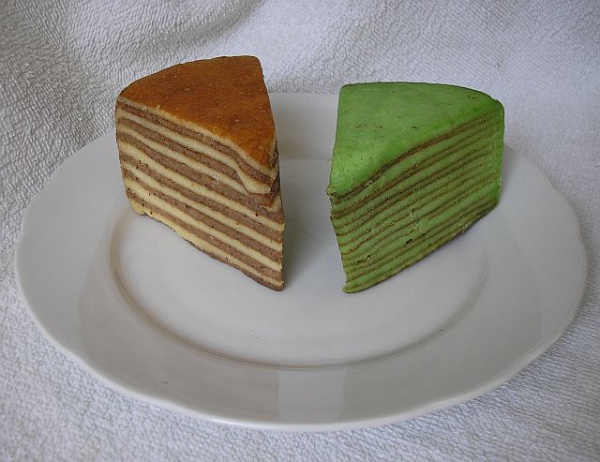Facts About Spekkoek
Spekkoek, also known as Indonesian layer cake, boasts a history that dates back to the colonial era in the Dutch East Indies. This cake is distinctive for its firm texture and intricate layers, resembling the European multi-layered spit cake—though it is not prepared on a spit. Spekkoek is renowned for its fragrant blend of Indonesian spices such as cardamom, cinnamon, clove, mace, and anise, combined with flour, egg yolks, and plenty of butter or margarine.
In Indonesia, spekkoek is a cherished treat, especially during festive occasions like Christmas (Natal), Chinese New Year (Imlek), and Eid (Lebaran). It is also a favorite at birthday parties and weddings. In the Netherlands, it is a traditional dessert often served during the rijsttafel, a Dutch-Indonesian rice table feast.
The name "spekkoek" translates from Dutch to "pork belly cake" alluding to its layered appearance which resembles pork belly. In Indonesian, it is called "lapis legit" meaning sweet layer cake. In English, it is often referred to as the "thousand layer cake" or "thousand layer spice cake."
Spekkoek is believed to have been created by the wives of Dutch administrators in Batavia (now Jakarta) during colonial times, typically served with evening tea. Crafting spekkoek is a labor of love; it involves baking more than 18 individual layers in a tin, a process that requires both patience and precision.
Given the effort and time required to make it, spekkoek is considered a luxury treat. In Indonesia, you can find various iterations of lapis legit that include ingredients such as almonds, cashew nuts, cheese, prunes, raisins, chocolate, and pandan flavor.
There are cakes similar to spekkoek, such as kue lapis Malang and kue lapis Surabaya from Malang and Surabaya, respectively, though these are prepared using different methods. Lapis legit is distinct from the traditional Indonesian kue lapis, a moist layered pudding made from rice flour and sago, which is steamed rather than baked. The popularity of lapis legit has also extended to Malaysia, where it is known as Sarawak layer cake or kek lapis Sarawak, featuring various colors and flavors.

 Germany
Germany